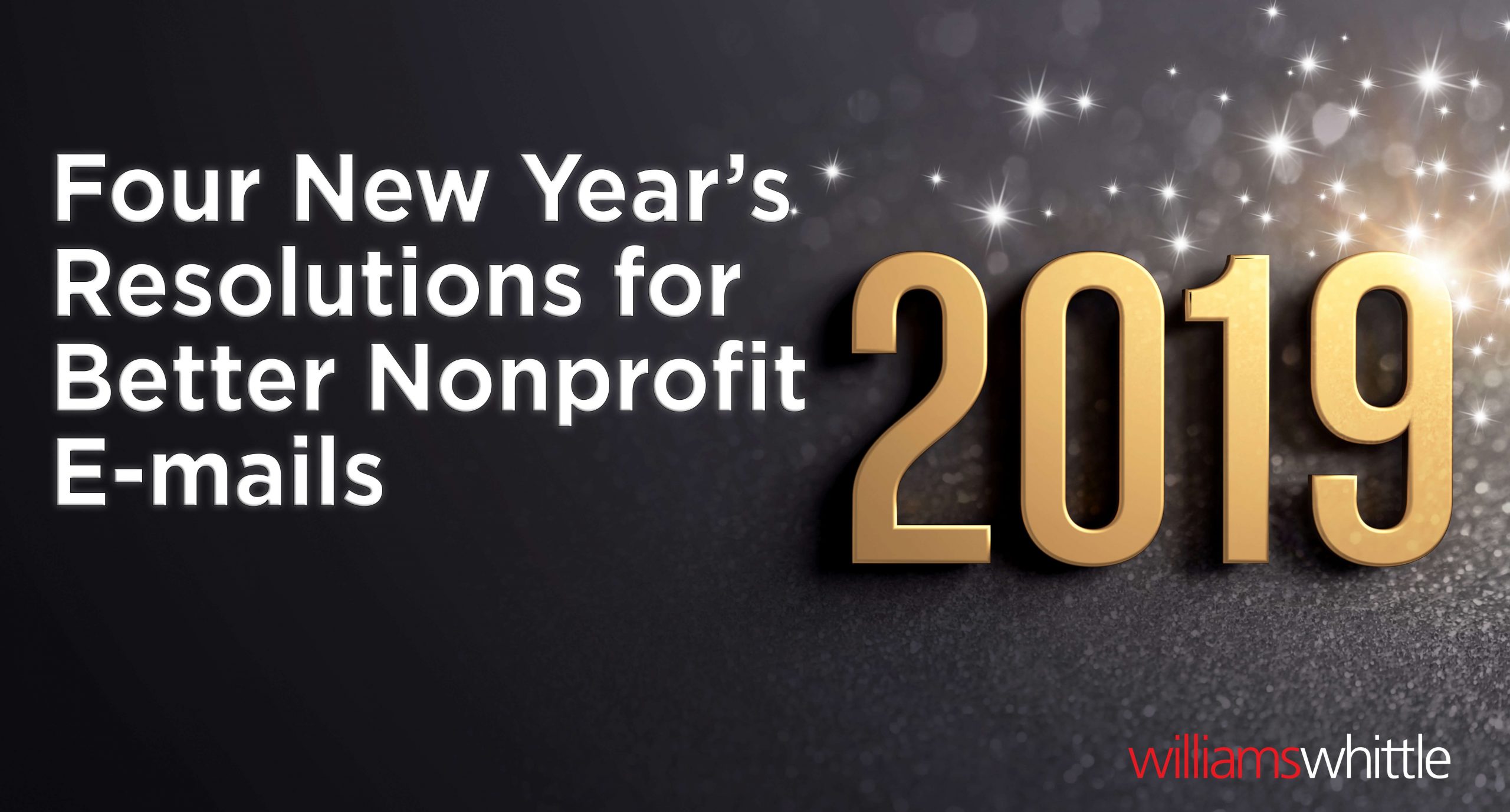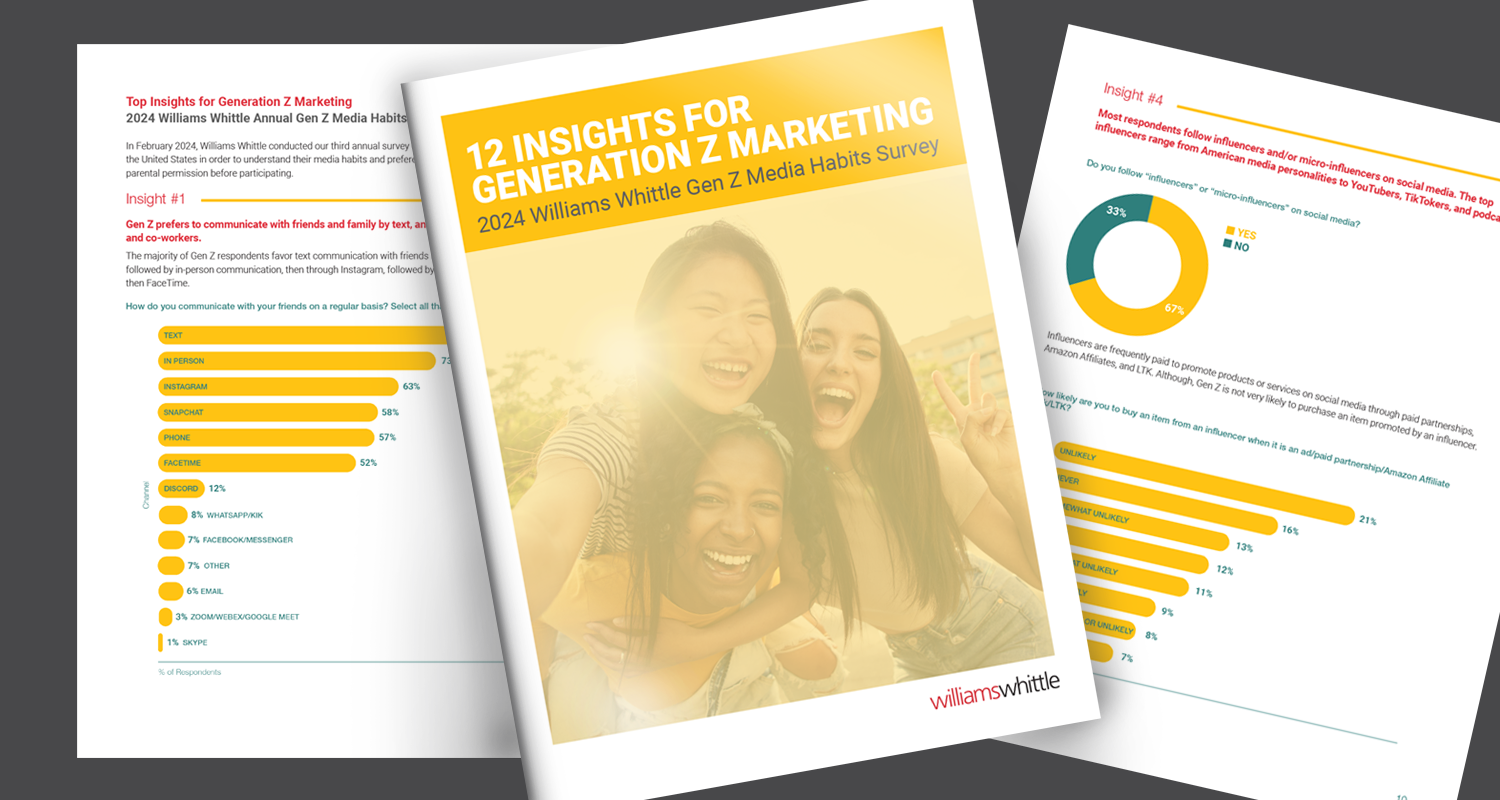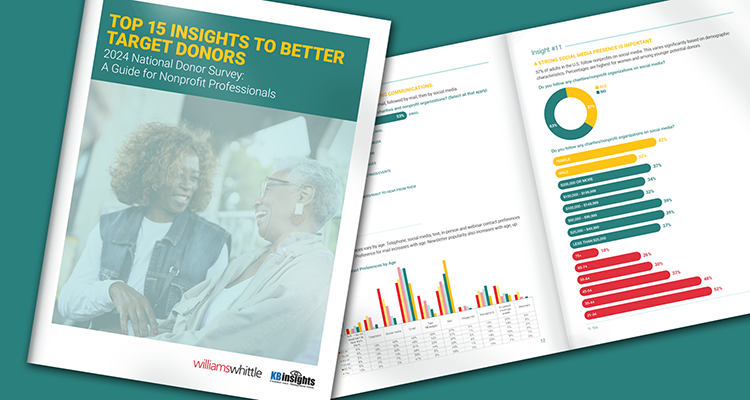Posted by: Allison Carney
We all know that early January is the time to make New Year’s resolutions that we (hopefully) keep. Changing behavior is always hard, but this time of year makes us feel like it’s a little easier, a little closer at hand. This blog will outline some New Year’s resolutions to get more of your e-mails read. Some are easy, some are hard. Pick out the ones that work best for you and commit to them to improve your work and the way your nonprofit connects with its stakeholders through e-mail.
#1: Kick Subject Line Writer’s Block to the Curb
I know how it is. You spend hours writing an e-mail fundraising appeal or newsletter, maybe days. It goes through the approval process, and the content is finalized. You’ve read the newsletter dozens of times, and you’re just ready to get it off your plate. But there’s one more step: the subject line. If you’re anything like me, you hurry to write a subject line, proofread it a dozen times, and then send it.
But the truth is, your subject line is the single most important content in your newsletter. It needs to force people to overcome their primary goal: getting through their e-mails as quickly as possible.
In 2019, include your subject lines in your first draft. Write three options right after you finish the first draft of content, and include it at the top of your newsletter for people to give you feedback on. It will take work off your plate and remove subject line writer’s block.
#2 Remove “Delete Triggers” from Your Subject Lines
You sit down at your desk in the morning, maybe having armed yourself with some coffee or tea. You open your inbox and are greeted by dozens of e-mails. What’s the first thing you do? Scan through and delete the ones you don’t need to read, selecting the ones of greatest interest.
Consider that moment. What goes into that decision-making process? What subject lines get you to immediately think that e-mail is not a priority? “Give” or “help” are dead giveaways that this e-mail is a fundraising appeal, which brings it to the top of the chopping block. Other phrases, such as “Monthly newsletter” or “Upcoming events” may work for targeted lists of engaged subscribers, but if it’s sent to your full list, may give an immediate trigger to be deleted unread.
For some added inspiration, take a look at some of the best and worst subject lines. While there are no hard and fast rules for optimal subject lines, as every audience is different, there are a few ways to up your chances. First, try limiting your length to 6-10 words. Second, think about how to make your subject lines stand out from the crowd. Ask a question, use a seasonal emoji, or personalize it with their name. For 2019, commit to writing short, compelling, and unmissable subject lines.
#3 Track and Document A/B Testing
No matter how many blogs you read or trainings you attend, the best way to get actionable information to improve your communications is to A/B test with your actual audiences. It’s absolutely one of the most effective things you can do to evaluate your strategies.
As with any marketing advice, there will always be the caveat about how your nonprofit’s audience may be different than the norm. That is especially true of e-mail marketing, as the majority of research will be geared towards for-profits. So the only way to tailor marketing advice you get from a blog post or a training is to try and document some A/B tests.
First, you can try testing slightly different subject lines. Next, try sending you e-mails at different times and remember to track your results. The hardest thing about A/B testing is not the testing itself, but checking back on the results and determining the actionable data.
In 2019, commit to A/B testing and documenting your results one time per month.
#4 Shorten your E-mails and Limit your Calls to Action
I’ve spent my entire career in the nonprofit sector, so I know how hard this is. There’s so much vital information to share that it’s a steep challenge to trim down your text and limit to one call to action (CTA). But the truth is that the shorter your e-mail, the more it will get read. So, as painful as it is, I urge you to impose a limit on how long your newsletters, action alerts, and updates can be and stick to it.
E-mail length is a perfect example of how A/B testing is vital to do for your particular audience. For example, if you have a highly-technical audience, say a group of volunteer lawyers, you may be able to get away with a 300-word e-mail. However, they also might be hard-pressed for free time and want to get through their e-mails as quickly as possible.
There is simply no way to know the perfect length of your nonprofit e-mails without doing some A/B tests, so try some out before you determine the perfect length to optimize readership.
In 2019, commit to a standard length for your e-mails and limiting to ONE CTA. I bet once 2020 rolls around, you’ll see an increase in your click-through-rate!
So start off 2019 with concrete plans to get more of your e-mails read and to move your mission forward. Need help with improving your e-mail stats? Contact us!
Allison is a nonprofit communications consultant and friend of Williams Whittle who specializes in creating affordable communications strategies for small nonprofits. She has five years of nonprofit and association experience including developing communications strategies, conducting an organizational rebrand, and building a custom social network.



